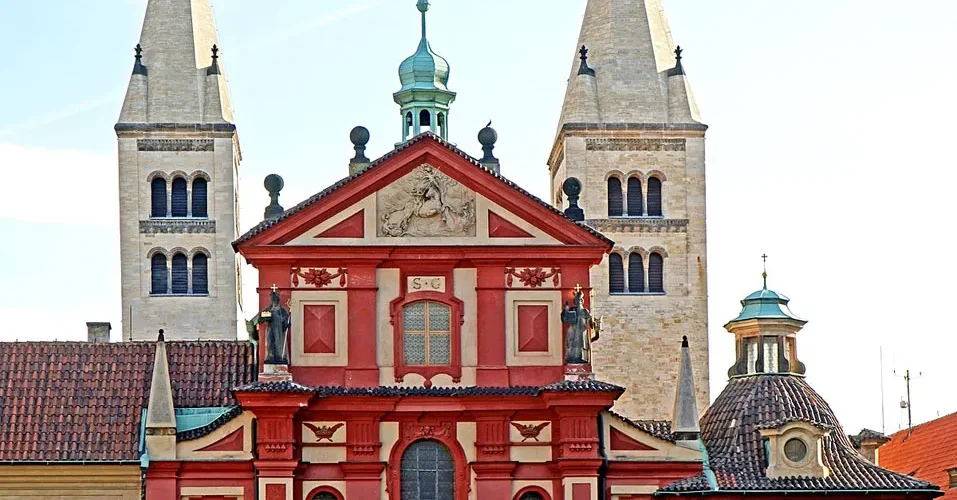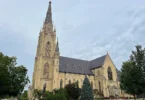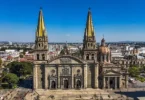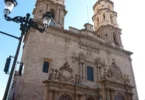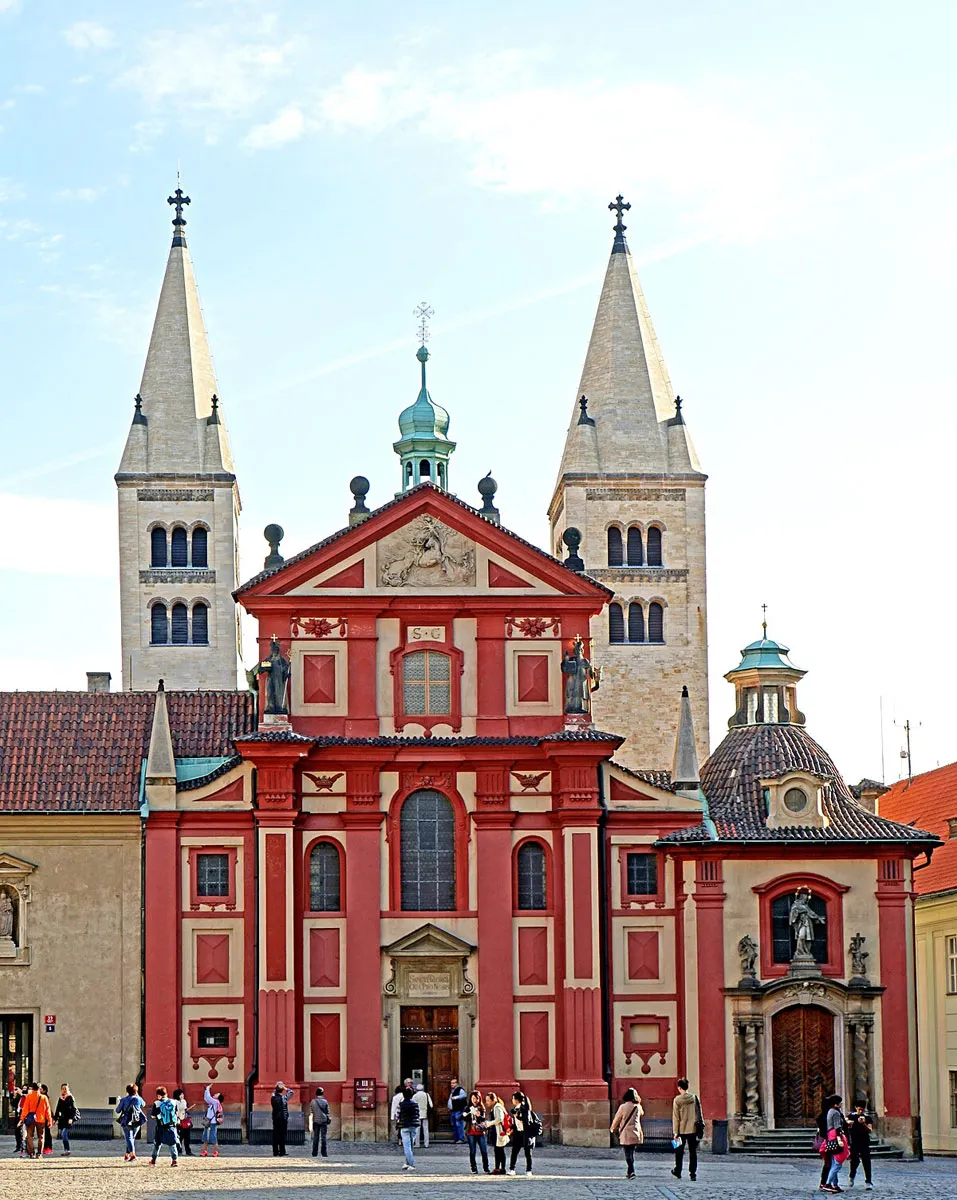
Introduction
St. George’s Basilica (Czech: Bazilika sv. Jiří) is the oldest surviving church building within Prague Castle, Prague, Czech Republic. The basilica was founded by Vratislaus I of Bohemia in 920. It is dedicated to Saint George. Primarily Romanesque in style, it is part of the collection of buildings that comprise the castle, the political capital of the nation, and the spiritual center of the Czech state. One of Prague’s most significant Romanesque monuments, this is the city’s second oldest church and was founded around 920 AD. Standing on Jiřské náměstí, the church is dominated by its two white stone steeples, which reach a height of 41 m. The wider southern tower is called Adam; the narrower northern tower is called Eve and stands at a slight tilt (about 40 cm). The Romanesque interior of the basilica with the tomb of the Přemyslids is included in the Prague Castle guided tour.
St. George’s Basilica was founded by Vratislaus I of Bohemia in 920, who dedicated the church to Saint George. In 973, an addition was built to house St. George’s Benedictine Abbey. Like many buildings of the time, it was partially destroyed by a fire in 1142 but rebuilt with all the original materials that could be saved from the wreckage.
St. George Basilica is one of the oldest surviving church buildings in the Czech Republic. Its foundations were laid during the reign of Prince Vratislav I, who sought to honor his patron saint, St. George. Originally constructed in the Romanesque style, this captivating church underwent various transformations throughout the centuries. Following a destructive fire in 1142, the basilica was reconstructed with its iconic main apse and two steeples. In the 13th century, a chapel dedicated to St. Ludmila and a portico were added. The Early Baroque period left its mark in the form of the present striking facade and the reconstruction of the whole convent. In the early 18th century, the architect F.M. Kanka added the Baroque Chapel of St. John Nepomuk to the church. After the devastating occupation of the convent by troops in the late 18th century, the church was renewed in the years 1887 to 1908, guided by the vision of F. Mach, who tried to restore its Romanesque appearance.
St. George’s Basilica is located at the Jiřské náměstí and it is one of our most significant Romanesque monuments as the second oldest Prague church established around 920 by prince Vratislav I. In 925, the remains of the murdered princess Ludmila were deposited here, the grandmother of St. Václav and the first Czech martyress. When the neighbouring St. George’s Monastery was established in 973, the temple was extended and re-built into a three-aisle basilica in an Oton’s, early-Romanesque style. After the fire in 1142, the basilica was restored by the mother superior Berta nearly to its present appearance. Two white towers of arenaceous marl with stone roof and two rows of Romanesque windows were added to the side aisles in the East. The thinner, Northern tower was called Eve, and the wider, Southern tower, built above the original separate chapel, was called Adam. Eve is slant, and was reinforced during the 70s in the framework of construction works. In the first half of the 13th century, the Chapel of St. Ludmila with her grave was added. Until 1055, the Basilica served the purpose of the official Premyslid dynasty burial grounds, before the St. Vitus Church was built. Prince Vratislav is buried here, as well as prince Oldřich and Jaromír, probably. In the crypt, accessible via a Baroque staircase, there is a black statue of Brigitte as the symbol of human inconsistency and frailty (depicting a maiden body post mortem). The remains of a Romanesque wall painting are preserved on the choir vault as well as in the neighbouring St. Ludmila’s Chapel. Regarding the original Romanesque furnishings, there are preserved parts of a relief with Madonna crowned by the angels, kneeling mother superior Mlada and Berta, and on the side, there is Přemysl Otakar I and his sister, mother superior Agnes (Anežka).
The view of the end of the ancient basilica from the Jiřská Street is the most impressive. The church portal in the Jiřská Street was made by the Benedikt Ried smelting plant around 1520, decorated by a view of a knight fighting a dragon in the frontispiece. In the 14th century, a new front face was built in the West, modified in the 17th century in an early Baroque style with a typical terracotta facade. The front face is decorated by a sandstone statue of the founder of Vratislav I Church and the foundress of Blessed Mlada Monastery; the author probably being Jan Jiří Bendl. In the years 1718 – 22, František Maxmilián Kaňka added a baroque Chapel of St. John of Nepomuk in the South-Western corner, which was built to celebrate his beatification. On the front face, there is his statue with angels by Ferdinand Maxmilián Brokoff; the interior was painted by Václav Vavřinec Reiner.
The South wall of the main aisle houses a series of paintings with the theme of St. Voršila’s martyrdom and 11 000 of Christian virgins by H. Burgkmair from the 16th century. There is a monument from the years 1947/48 named „Christ from the Trunk of a Tree“ by Otto Herbert Hájek in the Northern side aisle; the author donated the monument to the Czech people and to president Havel as a manifestation of reconciliation. During the era of Joseph II, the abolished St. George’s Monastery was used by the army, and the church dilapidated considerably, too. In the years 1887 – 1908 it was reconstructed according to the design of František Mach, who tried to renew the original Romanesque appearance. Archaeological research took place in the church and in the monastery in the years 1958 – 64. Prague Castle has been a National Cultural Monument since 1962.
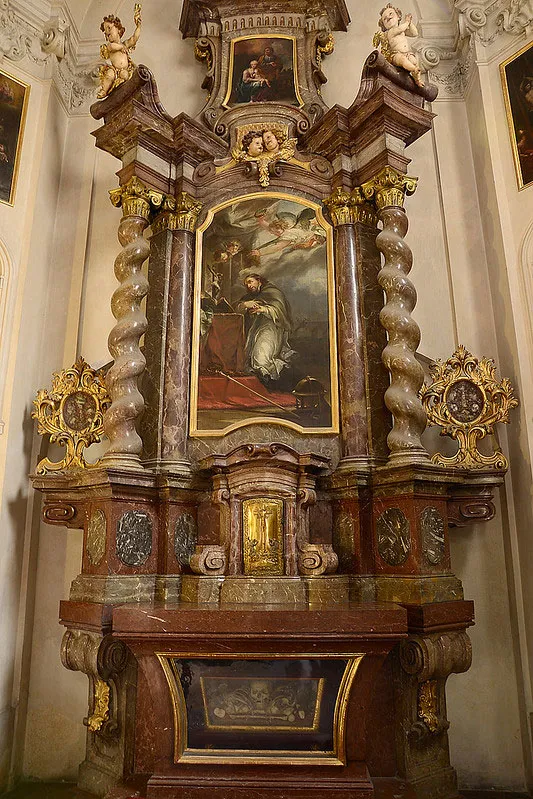
Consecrated in 921, the basilica is one of the oldest churches in Prague built in the Romanesque style. The construction of the church was begun by Vratislaus I. At the time of Vratislaus’ death in 921, the church had been completed but not consecrated. Wenceslaus I completed the project, and upon her death he buried his grandmother, Ludmila of Bohemia there. The basilica was prominent at the beginning of the spread of Christianity in Bohemia. Its collegiate church was at the center of the territory until the foundation of the Archdiocese of Prague in 973. In 976, the first building of the Benedictine St. George’s Abbey was erected on the north side of the basilica, and the basilica served as an abbey church. The original three-nave building was completed with a choir, a tribune for the nuns of the convent and a crypt.
Founded in 973 by Mlada, the Convent of Saint George sits next to the basilica. The abbess of this community had the right to crown the Bohemian queen consort. In 1142, Conrad III entered Bohemia to reinstate his brother-in-law Vladislaus II as duke. Conrad laid siege to the Prague Castle. During the siege, the church and convent suffered heavy damage caused by a fire. The damage was repaired between 1145 and 1151 and two towers were added to the church on that occasion. The northern, smaller tower is nicknamed “Eve”, while the southern, larger, tower is nicknamed “Adam”.The Baroque façade dates from the late 17th century.
In the years 1364–1378 the abbess Elisabetta completed the renovation of the chapel of Santa Ludmilla in the Gothic style, while the chapel’s altar was consecrated in 1371 by Archbishop Jan Očko of Vlašim. During the 15th century, the monastery was devastated during the Hussite Wars and rebuilt after the return of the Benedictines under Sigismund of Luxembourg. At the beginning of the 16th century, a new southern portal was built. During the fire of 1541, the basilica burned down again and was rebuilt again. Between 1608 and 1612, the Abbess Sophia of Helfenburg had a large choir for the nuns built in the western part of the central nave. In the late 17th century the Baroque façade was built, probably under the direction of Francesco Caratti [cs]. Between 1717 and 1722, the chapel of St. John of Nepomuk was erected by František Maxmilián Kaňka. A bas-relief on the south portal of the building represents Saint George and the Dragon.
In the 1780s, the condition of the buildings had deteriorated when Joseph II disbanded the monastic orders, and the monastery and basilica were repurposed and used by the army. With the exception of some elements of the façade, and interior of the church, the basilica has maintained the Romanesque style from the restoration after the fire in Prague Castle in 1142. A bas-relief on the outside of the building represents Saint George and the dragon.
Architecture of St. George's Basilica
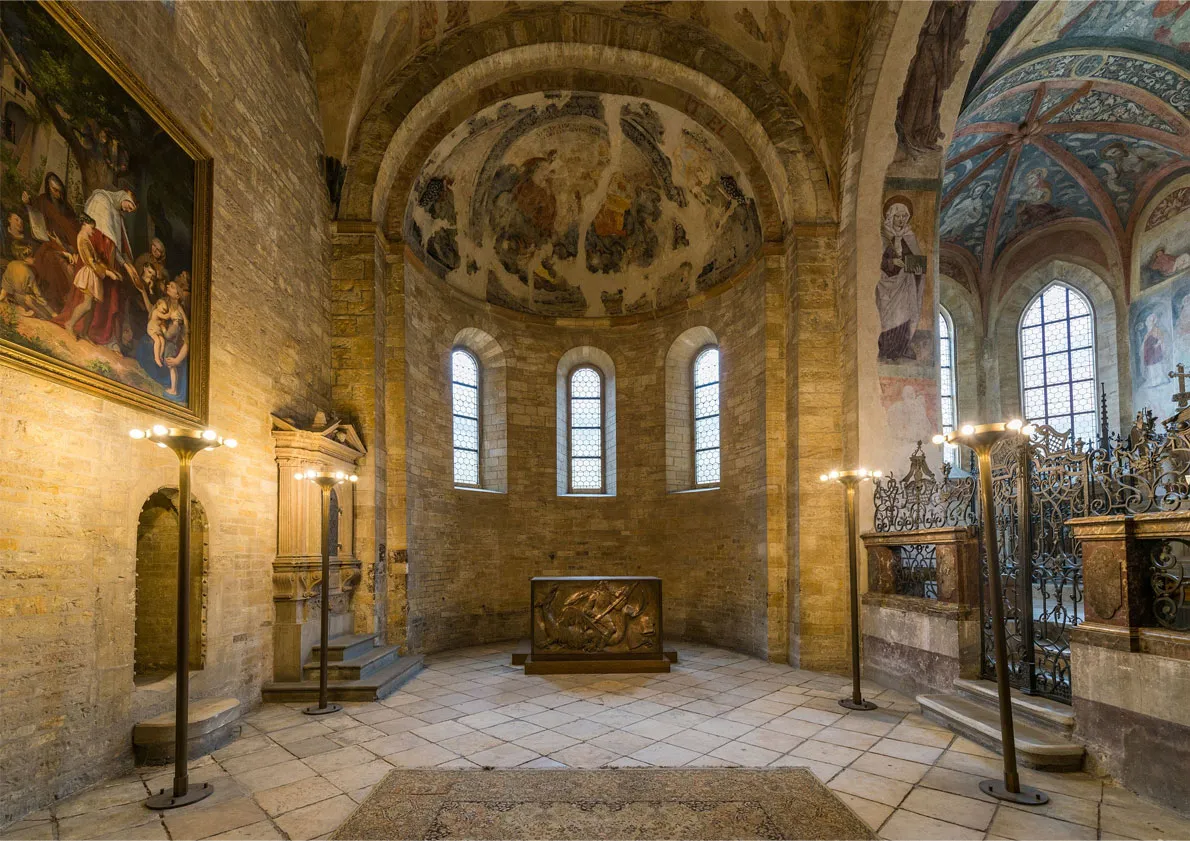
Architectural styles: Gothic architecture, Baroque architecture, Romanesque architecture
St. George’s Basilica originated as the second church at Prague Castle. Only parts of the building, founded about 920 by Prince Vratislav I have been preserved. When the convent of Benedictine nuns was founded in 973, the church was enlarged and reconstructed. The present Romanesque appearance of the church with main apse and two steeples dates back to the time of the reconstruction carried out after the devastating fire which occurred in 1142. In the first half of the 13th century, a chapel consecrated to St. Ludmila was added to the church as well as a portico on its western side. The Early Baroque period left its mark in the form of the present striking facade and the reconstruction of the whole convent. In the early 18th century, the architect F.M. Kanka added the Baroque Chapel of St. John Nepomuk to the church. After the devastating occupation of the convent by troops in the late 18th century, the church was renewed in the years 1887 to 1908 after the design by F. Mach, who tried to restore its Romanesque appearance. In the period from 1969 to 1975 the convent was also reconstructed and adapted for the installation of the exposition of old Bohemian art of the National Gallery. Now, the Convent is used for short-term exhibitions. The interior of the basilica is Romanesque, austere and monumental. The tombs of members of the ruling Premyslid dynasty are situated in the main nave. One of them belongs to prince Vratislav, father of St. Wenceslas.
St. George’s Basilica showcases a mesmerizing blend of architectural styles that testify to its historical significance and evolving design. Families visiting Prague Castle, especially those interested in history and architecture, will find the Basilica a fascinating mosaic of eras embodied in stone and artistry.
Architectural Marvel: Marvel at the Romanesque and Baroque architectural styles that blend seamlessly in this stunning basilica.
Royal Connections: Discover the ties between St. George’s Basilica and the Bohemian royal family, as it served as their private chapel for centuries.
Exquisite Interior: Admire the ornate frescoes, intricate stucco decorations, and beautiful stained glass windows that adorn the basilica’s interior.
Unique Collections: Explore the Basilica Museum, housing a remarkable collection of religious artifacts, including sculptures, paintings, and liturgical objects.
Peaceful Courtyard: Relax in the tranquil atmosphere of the St. George’s Convent Courtyard, adorned with a charming Renaissance fountain.
Proximity to Other Attractions: Enjoy the convenience of visiting St. George Basilica while exploring the Prague Castle complex, including St. Vitus Cathedral and Golden Lane.
Interior
Unlike the baroque and rococo churches of Prague, the interior of the basilica is simple and austere limestone block. The church is a three-aisled basilica with two towers located on the eastern end of the church, at the end of the two side aisles. It begins with a square presbytery, and ends in an apse. There is a three-nave crypt under the chancel. The church’s overall design is very simple. Inside, it has one very wide central apse and two side aisles. In addition to the red baroque facade, the basilica is also home to two magnificent white towers, which were added in the 12th century. The narrower north tower is named “Eve,” and the larger tower to the south is named “Adam.”
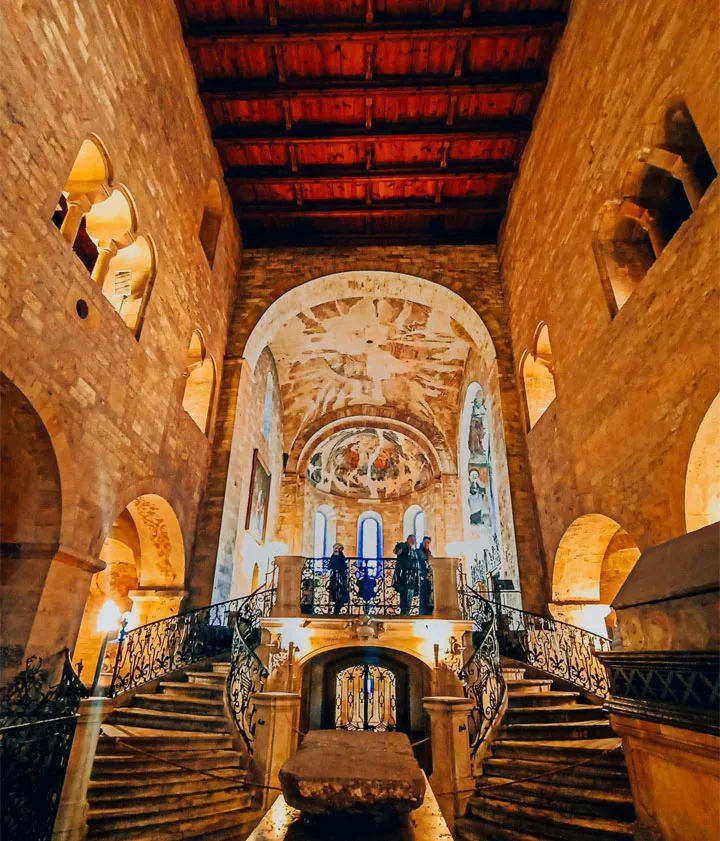
Romanesque and Gothic Elements
At the heart of St. George’s Basilica, the Romanesque-style windows pierce through the sturdy walls, casting ethereal light onto the hauntingly beautiful crypt below. This feature captures the essence of the 10th-century church, an era where the Romanesque was the predominant architectural style across Europe. The crypt is a silent witness to the centuries, offering families a glimpse into Prague’s spiritual history. Gothic elements can be seen as an evolving narrative in the church’s aesthetic, joining the solid, rounded arches with the soaring verticality typical of Gothic design. Its Gothic aspects are subtle clues to its ongoing story, told in modifications and expansions that span centuries.
Baroque Facade and Interior
In stark contrast to its early medieval roots, the church is adorned with a Baroque facade that demands attention and serves as a grand welcome to families exploring the site. Introduced in the 17th century, its striking red facade is a visual spectacle, drawing visitors into the church’s equally rich Baroque interior. The interior is marked by exquisite Baroque chapels, including the renowned Chapel of St. John of Nepomuk, adorned with art and symbols of the sanctity and history it represents. Children may be fascinated by the elaborate designs and the stories depicted within the chapels’ frescoes, providing a visual feast that narrates tales of saints and patrons. This historical gem also features a charming Baroque portico, an inviting entrance flanked by artistic sculptures and embellishments that speak volumes of the era’s exquisite style and the skill of its architects. Its Baroque elements create a warm and lavish atmosphere that envelops families in the rich tapestry of Prague’s architectural heritage.
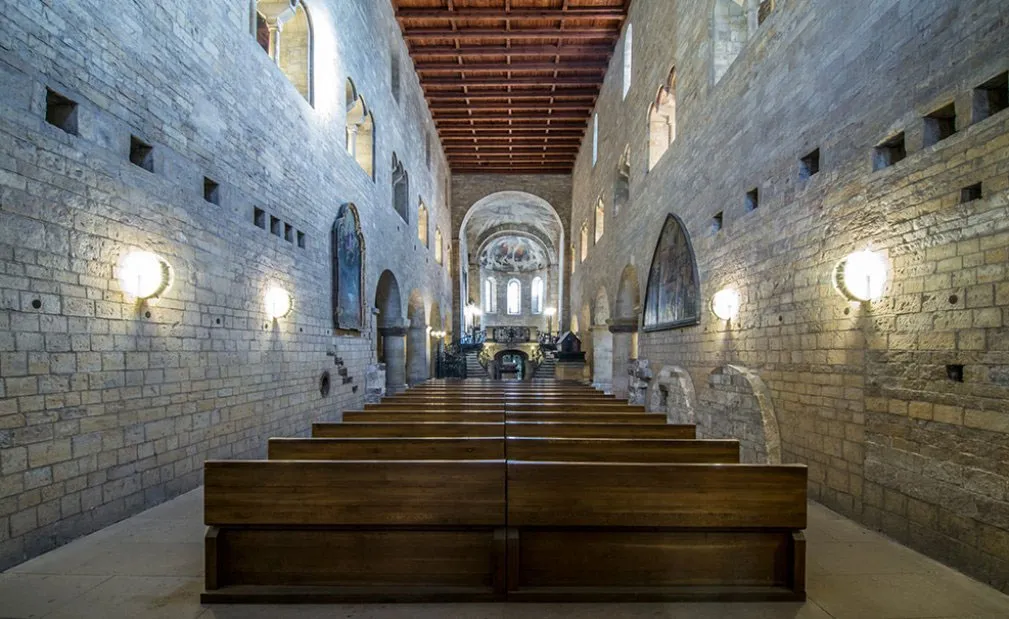
Religious and Cultural Importance
St. George’s Basilica is prestigious in Prague’s history as a charming amalgamation of religious significance and cultural heritage. This ancient church serves as an architectural treasure and a silent witness to the rich tapestry of stories woven around Czech patron saints and nobility.
Home to Benedictine Nuns
Established in the 10th century, St. George’s Convent, adjacent to the Church, was once a vibrant community of Benedictine nuns. Throughout the centuries, the convent served as a place of deep spirituality and learning, anchored by the patronage of influential female saints. Notably, St. Ludmila, the grandmother of St. Wenceslas, is intimately connected to this religious site, exemplified by the dedicated Chapel of St. Ludmila, a space revered for its historical and holy significance.
Chapels and Patron Saints
Within the Basilica’s sturdy Romanesque walls lie several chapels, each a hub of devotion dedicated to various saints. The Chapel of St. John of Nepomuk stands out, paying homage to the life of the Czech martyr revered for his piety and fidelity. Additionally, the Baroque Chapel offers a striking contrast with its ornate design, a testament to the evolving art styles that have left their mark on the church’s interior. The Basilica’s dedication to Saint George is central to its standing in Prague’s cultural canon, symbolically tying the present community with the legends of past protectors and guardians of the Kingdom of Bohemia.
Art and Exhibitions
St. George’s Basilica, a historical gem nestled within the Prague Castle complex, is a venue where art and history intertwine beautifully. Not only does it stand as an architectural marvel, but it also serves as a prominent exhibition space for the National Gallery. Here, visitors can immerse themselves in a showcase of Czech artistry set against the backdrop of the Basilica’s aesthetic splendor.
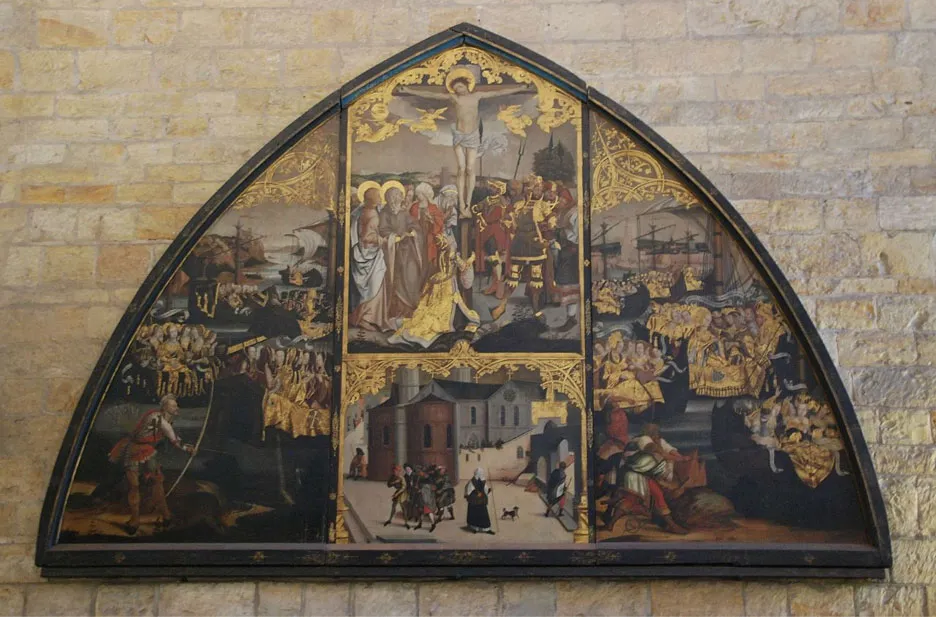
Frescos and Artwork
The interior of St. George’s Basilica is adorned with well-preserved frescoes. These vibrant wall paintings provide a visual narrative of religious tales and historical accounts, inviting viewers of all ages into ancient worlds. Visitors observe these timeless pieces, reflecting Romanesque roots and later Gothic modifications, offering an insight into the artistic evolution over centuries. For those exploring Prague using public transport, the convenient Tram No. 22 or Metro Line A will bring them directly to this art and history treasure trove.
Church Windows
The one piece of decoration in the church is the windows. They provide dramatic lighting as the sun shines and provides some of the only natural light inside the church. The rest of the light in the church is artificial but artistically designed to highlight the romanesque arches found throughout the building.
Saint Ludmila
Inside the small church, towards the front, is a gothic-style chapel which holds the tomb of Saint Ludmila of Bohemia. In addition to St. Ludmila, the church’s founders, Prince Vratislav and Boleslav II are buried in the gothic chapel.
The Crypt
You can bend down to look at the 12th-century crypt underneath the nave choir. You might spot a gruesome statue of a decaying girl’s body, with a snake coiled in her abdomen. It is an allegory for vanity. The girl is named ‘Brigita,’ after a famous Czech legend. The legend goes that a famous Italian sculptor murdered his lover, and from that day on, driven mad by guilt and remorse, he was only ever able to carve and paint images of her decaying corpse. No matter how many beautiful things he tried to paint, they all, in the end, turned into death.
The Crucifix of St. George Basilica
The large wooden crucifix, which is nailed to the walls of St. George’s Basilica, will often draw quite a crowd. This is because of the many rumour surrounding it. In the 13th century, the crucifix started to bleed when the royal princess Anna began to pray nearby. Her father had gone to battle, and she was praying for his safe return. When she saw it starting bleeding, she knew it was a sign that he was dead and that his death would signal a tumultuous period for the Czech people. This all eventually came to pass. A haunting idea to remember when looking at the crucifix is what other premonitions it will have that shall, too, come to pass.
Burials
Ludmila of Bohemia, grandmother of Wenceslaus I and patron of the Kingdom of Bohemia
Vratislaus I, Duke of Bohemia
Agnes of Bohemia
Jaromír, Duke of Bohemia
Oldřich, Duke of Bohemia
Boleslaus II, Duke of Bohemia
Kunigunde of Bohemia
Bones in St George Basilica, Prague
Many members of the Czech Royal Dynasty had been buried in the Prague Castle basilica over centuries. However, the human bones displayed in the altar of St. John of Nepomuk located in the chapel of St. George’s Basilica belong to someone who lived long before the Bohemian kingdom was established – St. Theodora. Very little is known about this early Christian saint. She probably lived around 120 AD in Rome and was martyred together with her brother St. Hermes, who she had cared about when he was imprisoned. They were both buried on the Salarian road outside of Rome, and later the bones of St. Theodora were gifted to the St. George’s Basilica in Prague.
St. Georges Basilica (Kláster sv. Jirí na Prazském hrade) Prague, Czech Republic
St. George’s Basilica was founded by Prince Vratislav (915‐921) and is the best preserved Romanesque church and at the same time one of the oldest church buildings in Prague. St. George’s Basilica ranks among the great monuments of Romanesque architecture in Bohemia. It was enlarged in 973 when the adjoining St. George’s Convent was established, and rebuilt following a fire in 1142. Several Czech princes of the House of Poemyslid, including the founder of the basilica, Prince Vratislav, are buried in the Basilica. The massive twin towers and austere interior have been restored to give a true impression of the church’s original appearance. The red facade was a 17th century Baroque addition. St. George’s Basilica now serves as a concert hall for classical concerts.
Some interesting facts about the Basilica of St George
Nestled within the historic Prague Castle complex, St. George’s Basilica is a testament to medieval architecture and Bohemian history. Families visiting Prague often marvel at its striking façade, and the stories etched into its ancient stones.
A Tenth-Century Foundation: The Basilica is one of the oldest surviving churches in Prague, with origins dating back to the 920s. It witnesses centuries of turbulent and transformative events in Prague’s past.
Romanesque Resilience: Visitors are captivated by its Romanesque architecture, which has withstood the test of time. The Basilica displays characteristic features such as thick walls, round arches, and robust pillars, inviting families to return to the Middle Ages.
Dynastic Tombs: Until 1055, the Church was the final resting place of members of the Premyslid dynasty. For example, the Basilica is home to the tomb of Saint Ludmila of Bohemia, the grandmother of St. Wenceslas. Kids are often fascinated by learning about the Czech princes and princesses whose stories are integral to the Basilica’s legacy.
Artistic Restoration: After suffering damage in the Thirty Years War, the building underwent significant renovations. The 19th century witnessed a revival of its interior, aiming to reestablish the church’s former glory.
From Sacred to Secure: The adjacent convent, once part of the basilicás religious life, was deconsecrated and now houses part of the National Gallery, bringing a touch of modernity to the age-old structure.
The Basilica of St George is more than just a religious site; it’s a chapter of Czech history that brings joy to those of all ages. Its tales of the past and architectural beauty make it a staple in any family trip to Prague.
St. George Basilica Today
St George’s Basilica now serves as a concert hall. The Basilica serves as a final resting place to several important people in the history of the Bohemia Kingdom, including Ludmila of Bohemia. Ludmila was the grand-mother of King Wencelaus and a martyr as well as a saint, who is buried in the chapel dedicated to her.St. George Basilica holds a special place in the heart of Prague Castle, captivating visitors with its rich history and remarkable architecture. As one of the oldest surviving churches within the castle complex, St. George Basilica has witnessed centuries of religious ceremonies, royal events, and historical milestones. Today, it stands as a revered symbol of Prague’s past and welcomes countless visitors eager to immerse themselves in its captivating beauty.
St. George’s Basilica is a captivating destination for families touring Prague. Its origins date back to the 10th century, making it the oldest surviving church building within Prague Castle. For those intrigued by history, the rich past of this building is an undeniable draw. Its Romanesque architecture is complemented by Gothic and Baroque modifications, which tell a story of the centuries it has survived. St. George’s Basilica is worth visiting with kids. The highlights for a family visit include exploring the colorful frescoes that date back to the 12th century and the tomb of St. Ludmila, an essential figure for Czech Christians. Additionally, the church windows create a serene, mystical, and inviting atmosphere, especially when they light up the Romanesque arches. It is an excellent educational opportunity for children to grasp different architectural styles through the ages visually. It holds regular classical concerts for those who love music. These events make for a memorable evening combining cultural immersion with auditory pleasure, suitable for all ages. The oldest church building within the Prague Castle complex is worth visiting for its historical significance, architectural beauty, educational value, and cultural experiences. It enables families to step back and enrich their understanding of Prague’s history while creating lasting memories.
Annual Feast Day
Feast day: 23 April
The annual feast day of The Church of St. George’s Basilica Prague, Czechia is celebrated on April 23 each year.
Mass Timing
Holy mass is celebrated every Thursday at 5PM.
Summer Tourist Season (April 1 till October 31)
Prague Castle grounds
6.00 – 22.00
Visitor objects
9.00 – 17.00
Winter Tourist Season (November 1 till March 31)
Prague Castle grounds
6.00 – 22.00
Visitor objects
9.00 – 16.00
Contact Info
Hradčany,
119 08 Prague 1,
Czechia.
Phone No.
Phone: +420 224 371 111
Accommodations
Connectivities
Airway
The nearest airport to The Church of St. George’s Basilica Prague, Czechia is, Václav Havel Airport Prague (PRG), Aviatická, 161 00 Praha 6, Czechia which is just 21 min (12.0 km) via Evropská away from the basilica.
Railway
The nearest railway to The Church of St. George’s Basilica Prague, Czechia, Prague Main Railway Station, Vinohrady, 120 00 Praha 2, Czechia which is just 14 min (7.1 km) via Wilsonova away from the basilica.

